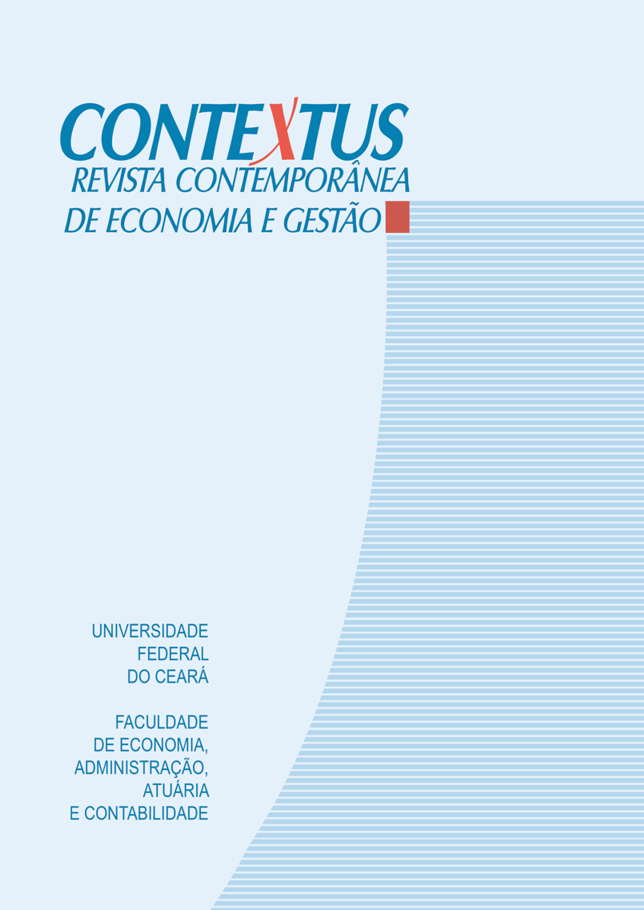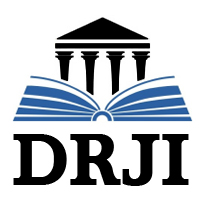Producing with sustainability: A study on circular practices in a rural property in Brazil
DOI:
https://doi.org/10.19094/contextus.2023.85348Keywords:
sustainable agriculture, circular practices, rural properties, grains production, sustainabilityAbstract
The study aimed at identifying sustainable production practices on a rural property in Mato Grosso, Brazil from the perspective of the Circular Economy. The approach in the form of a single case study involved a location whose main activity is the production of grains and adopted qualitative data obtained through structured interviews with managers of the production units, observation and documentary research. The results show that, although sustainable production practices are adopted, there is room for advances. The study contributes by reporting sustainable production practices that can be related to circular agriculture, which has as the main goal the efficient and effective use of productive resources. At the end, 11 Circular Economy elements directed to agriculture are listed.
Downloads
References
Aponte, G. (2022). Panorama internacional de la economía circular a través del análisis de la producción científica y tecnológica. Tekhné, 25(1), 13-13. https://revistasenlinea.saber.ucab.edu.ve/index.php/tekhne/article/view/5419
Bardin, L. (2004). Análise de conteúdo (3 ed.). Lisboa: Edições.
Basso, B., Jones, J. W., Antle, J., Martinez-Feria, R. A., & Verma, B. (2021). Enabling circularity in grain production systems with novel technologies and policy. Agricultural Systems, 193, 103244. https://doi.org/10.1016/j.agsy.2021.103244
Bibas, R., Chateau, J., & Lanzi, E. (2021). Policy scenarios for a transition to a more resource efficient and circular economy. In: OECD Environment Working Papers, nº. 169, OECD Publishing: Paris. https://www.oecd-ilibrary.org/environment/policy-scenarios-for-atransition-to-a-more-resource-efcient-and-circular-economy_c1f3c8d0-en. https://doi.org/10.1787/c1f3c8d0-en
Byars, E. A., Morales-Hernandezz, B., & HuiYing, Z. (2004). Waste glass as concrete aggregate and pozzolan: laboratory and industrial projects. Concrete (London), 38(1), 41-44.
Collis, J., & Hussey, R. (2005). Pesquisa em administração: Um guia prático para alunos de graduação e pós-graduação (2. ed). Porto Alegre: Bookman.
Dagevos, H., & Lauwere, C. C. B. M. (2021). Circular agriculture: Perceptions and practices of dutch farmers. Sustainability, 13, 1282. https://doi.org/10.3390/su13031282
Eisenhardt, K. M., & Graebner, M. E. (2007). Theory building from cases: Opportunities and challenges. Academy of Management Journal, 50(1), 25-32. https://doi.org/10.5465/amj.2007.24160888
Geng, Y., Zhu, Q., Doberstein, B., & Fujita, T. (2009). Implementing China’s circular economy concept at the regional level: A review of progress in Dalian, China. Waste Management, 29(2), 996-1002. https://doi.org/10.1016/j.wasman.2008.06.036
Ghisellini, P., Cialani, C., & Ulgiati, S. (2016). A review on circular economy: The expected transition to a balanced interplay of environmental and economic systems. Journal of Cleaner Production, 114, 11-32. https://doi.org/10.1016/j.jclepro.2015.09.007
Hercher-Pasteur, J., Loiseau, E., Sinfort, C., & Hélias, A. (2021). Identifying the resource use and circularity in farm systems: Focus on the energy analysis of agroecosystems. Resources, Conservation and Recycling, 169, 105502. https://doi.org/10.1016/j.resconrec.2021.105502
House, O. C. (2014). Growing a circular economy: Ending the throwaway society. HC-214. Londres: House of Commons/Environmental Audit Committee, 18, 434A-441A.
Instituto Brasileiro de Geografía e Estatistisca. (2020). Ranking dos munícipios por produtos de lavoura temporária - PAM2020. https://censoagro2017.ibge.gov.br/agencia-detalhe-de-midia.html?view=mediaibge&catid=2102&id=5034
Jabbour, A. B. L., Luiz, J. V. R., Luiz, O. R., Jabbour, C. J. C., Ndubisi, N. O., Oliveira, J. H. C., & Horneaux, F. H., Junior. (2019). Circular economy business models and operations management. Journal of Cleaner Production, 235, 1525-1539. https://doi.org/10.1016/j.jclepro.2019.06.349
Kristensen, HS, & Mosgaard, MA (2020). A review of micro level indicators for a circular economy – Moving away from the three dimensions of sustainability? Journal of Cleaner Production, 243, 118531. https://doi.org/10.1016/j.jclepro.2019.118531
Lieder, M., & Rashid, A. (2016). Towards circular economy implementation: A comprehensive review in context of manufacturing industry. Journal of Cleaner Production, 115, 36-51. https://doi.org/10.1016/j.jclepro.2015.12.042
Lopes. M. A. (2015). A busca por uma nova economia. Área de Informação da Sede. https://www.infoteca.cnptia.embrapa.br/infoteca/bitstream/doc/1087177/1/Abuscaporumanovaeconomia.pdf
MacArthur, E. (2015). Towards the circular economy: Economic and business rationale for an accelerated transition. https://www.werktrends.nl/app/uploads/2015/06/Rapport_McKinsey-Towards_A_Circular_Economy.pdf
Mintzberg, H., & Waters, J. A. (1985). Of strategies, deliberate and emergent. Strategic Management Journal, 6(3), 257-272. https://doi.org/10.1002/smj.4250060306
Nguyen, H., Stuchtey, M., & Zils, M. (2014). Remaking the industrial economy. McKinsey Quarterly, 1, 46-63.
Platnieks, O., Gaidukovs, S., Barkane, A., Sereda, A., Gaidukova, G., Grase, L., Thakur, V. K., Filipova, I., Fridrihsone, V., Skute, M., & Laka, M. (2020). Bio-based poly (butylene succinate)/microcrystalline cellulose/nanofibrillated cellulose-based sustainable polymer composites: Thermo-mechanical and biodegradation studies. Polymers, 12(7), 1472. https://doi.org/10.3390/polym12071472
Poponi, S., Arcese, G., Pacchera, F., & Martucci, O. (2022). Evaluating the transition to the circular economy in the agri-food sector: Selection of indicators. Resources, Conservation and Recycling, 176, 105916. https://doi.org/10.1016/j.resconrec.2021.105916
Rosa, P., Sassanelli, C., & Terzi, S. (2019). Towards Circular Business Models: A systematic literature review on classification frameworks and archetypes. Journal of Cleaner Production, 236, 117696. https://doi.org/10.1016/j.jclepro.2019.117696
Sehnem, S., Queiroz, A. A. F. S., Pereira, S. C. F., Correia, G. S., & Kuzma, E. (2022). Circular economy and innovation: A look from the perspective of organizational capabilities. Business Strategy and the Environment, 31(1), 236-250. https://doi.org/10.1002/bse.2884
Sehnem, S., Vazquez-Brust, D., Pereira, S. C. F., & Campos, L. M. (2019). Circular economy: Benefits, impacts and overlapping. Supply Chain Management: An International Journal, 24(6), 784-804. https://doi.org/10.1108/scm-06-2018-0213
Su, B., Heshmati, A., Geng, Y., & Yu, X. (2013). A review of the circular economy in China: Moving from rhetoric to implementation. Journal of Cleaner Production, 42, 215-227. https://doi.org/10.1016/j.jclepro.2012.11.020
Tukker, A. (2015). Product services for a resource-efficient and circular economy – A review. Journal of Cleaner Production, 97, 76-91. https://doi.org/10.1016/j.jclepro.2013.11.049
United Nations Environment Programme. (2018). Resource panel. https://www.resourcepanel.org/reports/re-defining-value-manufacturing-revolution
United Nations. Department of Economic and Social Affairs Economic Analysis. (2021). Policy Brief #105: Circular agriculture for sustainable rural development. https://www.un.org/development/desa/dpad/publication/un-desa-policy-brief-105-circular-agriculture-for-sustainable-rural-development/
Velasco-Muñoz, J. F., Mendoza, J. M. F., Aznar-Sánchez, J. A., & Gallego-Schmid, A. (2021). Circular economy implementation in the agricultural sector: Definition, strategies and indicators. Resources, Conservation and Recycling, 170, 105618. https://doi.org/10.1016/j.resconrec.2021.105618
Vieira, M. M. F., & Zouain, D. M. (2004). Pesquisa qualitativa em administração. Rio de Janeiro: FGV.
Wagenigen University Research. (2018). Circular agriculture: A new perspective for Dutch agriculture. https://www.wur.nl/en/newsarticle/Circular-agriculture-a-new-perspective-for-Dutch-agriculture-1.htm
Wei, F., Liu, S., Yin, L., Li, W., & Yu, Z. (2014). Research on performance evaluation system for green supply chain management based on the context of recycled economy-taking guangxi's manufacturing industry as example. Journal of Grey System, 26(2), 177.
Yin, R. K. (2010). Estudo de caso: Planejamento e métodos (4 ed.). Porto Alegre: Bookman.
Zucchella, A., & Previtali, P. (2019). Circular business models for sustainable development: A “waste is food” restorative ecosystem. Business Strategy and the Environment, 28(2), 274-285. https://doi.org/10.1002/bse.2216
Published
How to Cite
Issue
Section
License
Copyright (c) 2023 Journal: only for the 1st publication

This work is licensed under a Creative Commons Attribution-NonCommercial 4.0 International License.
The authors, while doing the submission, accept the notice below:
We authors hold the copyright related to our paper and transfer Contextus journal the right for the first publication with a Creative Commons’ international license of the modality Attribution – Non-commercial 4.0, which in turn allows the paper to be shared providing that both the authorship and the journal’s right for initial release are acknowledged.
Furthermore, we are aware of our permission to take part in additional contracts independently for non-exclusive distribution of the version of our work published in this journal (e.g. publishing it in an institutional repository or as a book chapter), while acknowledging both the authorship and the journal’s initial publication.
We also certify that the paper is original and up to this date has not been released in any other journal, Brazilian or of another nationality, either in Portuguese or another language, as well as it has not been sent for simultaneous publication in other journals.
Last, we not only know that plagiarism is not tolerated by Contextus but also certify the paper presents the sources of passages from cited works, including those authored by ourselves.









3.png)


1.jpg)



1.jpg)


1.jpg)






.jpg)



1.jpg)

1.jpg)


1.jpg)

1.jpg)
1.jpg)
2.png)




1.jpg)
2.jpg)

1.jpg)





1.jpg)


1.jpg)
1.jpg)
